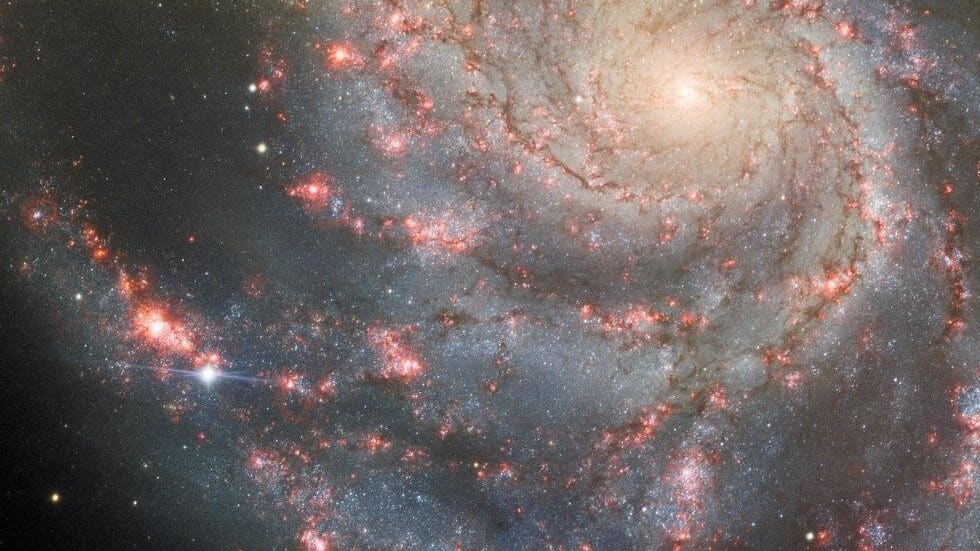Gemini North, part of the International Gemini Observatory operated by NSF’s NOIRLab, is back … [+]
Supernova 2023ixf has been imaged in exquisite detail by the Gemini North telescope on Hawaii’s Mauna Kea volcano.
One of the largest, brightest and closest supernovae seen for a decade, SN 2023ixf appeared in the outskirts of the Pinwheel galaxy—also known as Messier 101—on May 19, 2023.
A supernova is the self-destruction of a massive supergiant star. As it explodes it can be as bright as 100 billion stars for a few weeks or months.
As well as the spectacular image, above, which features the supernova in the bottom-left, a zoomable image has been made available online.
Explosive release
Initial observations suggest that SN 2023ixf is a type II supernova, which means it reached a mass it couldn’t support, which triggered an explosive release of energy that pushed the star’s layers into space leaving the collapsed core of the massive supergiant star—a neutron star.
SN 2023ixf was discovered by amateur astronomer Koichi Itagaki using his own telescope in Yamagata, Japan. It was quickly confirmed by astronomers at the Zwicky Transient Facility (ZTF) telescopes in California.
The Pinwheel Galaxy is a face-on spiral galaxy in the constellation Ursa Major (home to the Big Dipper asterism) and around 21 million light-years distant.
That means it actually exploded 21 million years ago and its light is only now reaching us.
Closest since 2014
SN 2023ixf is the closest supernova to the solar system since SN 2014J in the Cigar Galaxy (also called M82), which appeared in 2014. It was 12 million light-years distant.
The incredible image from Gemini North is the telescope’s first image since the repair and refurbishment of its eight-meter primary mirror.
The most likely star to go supernova anywhere near the solar system is red supergiant Betelgeuse, which unexpectedly dimmed in 2019, though there’s no evidence that it’s about to explode.
Wishing you clear skies and wide eyes.
Discover more from Today Headline
Subscribe to get the latest posts to your email.












